As summarised earlier, the Australian Bureau of Statistics (ABS) has today released its labour force report for April, which registered a 10,800 rise in total employment but an unchanged headline unemployment rate of 5.7%.
The steady unemployment rate beat analysts’ expectations of a 0.1% rise, however the tepid jobs growth missed analysts’ of 12,000 jobs created over the month.
In trend terms, the unemployment rate fell ever so slightly from 5.77% to 5.75%:
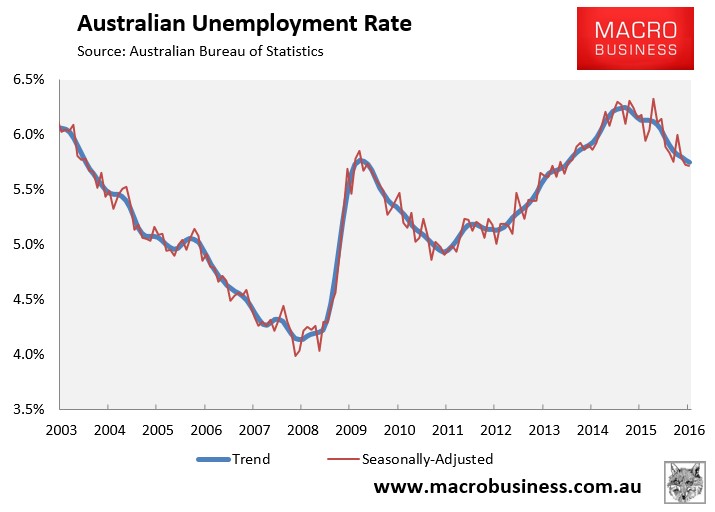
Again, total employment rose a seasonally adjusted 10,800 to 11,917,200. However, this was driven entirely by part-time jobs, which jumped by 20,200 to 3,751,600. By contrast, full-time jobs fell by 9,300 to 8,165,600:
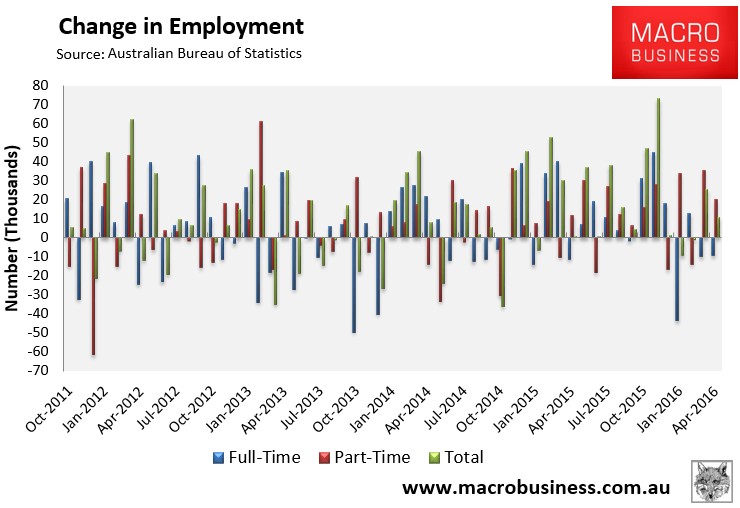
The participation rate also fell ever so slightly:
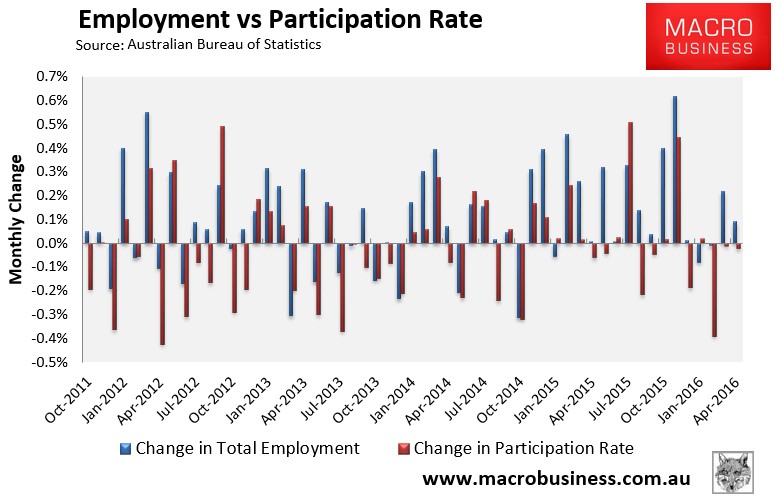
The trend in total employment also continues to flatline after October’s and November’s numberwang:
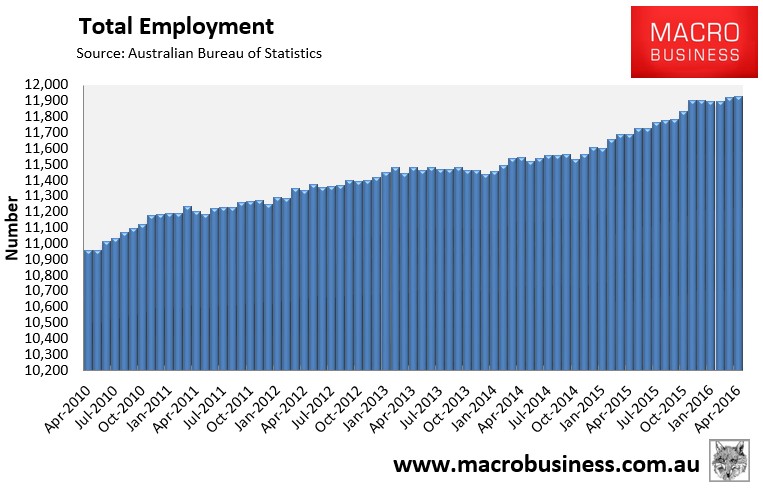
Annual employment growth continues to weaken and is being driven primarily by part-time employment:
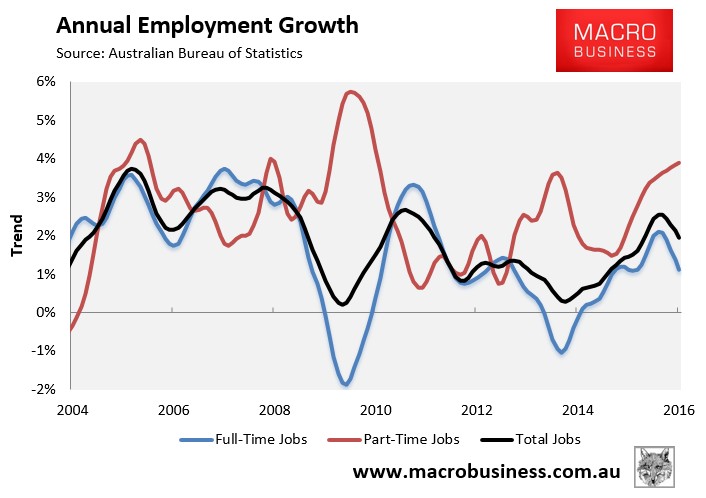
As shown above, trend full-time jobs growth has slumped to just 1.1% versus 3.9% growth for part-time jobs.
The proportion of the population in full-time work has also hit a record low:
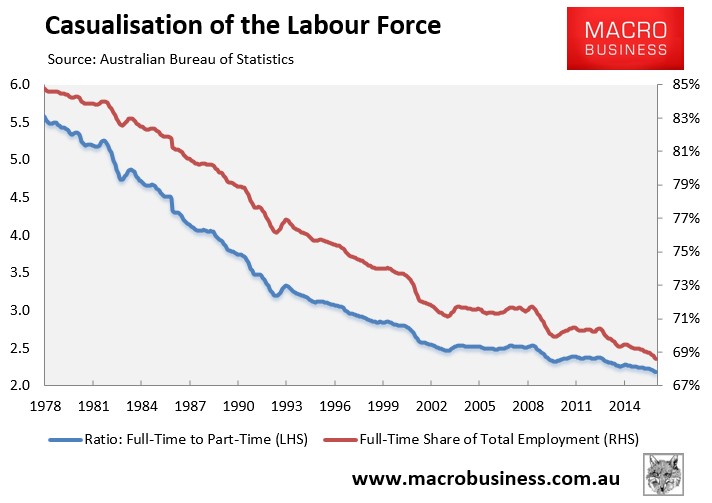
The housing bubble epicentres of New South Wales (Sydney) and Victoria (Melbourne) continue to drive jobs growth, accounting for 53% and 27% respectively of total new jobs nationally over the past year in seasonally adjusted terms:
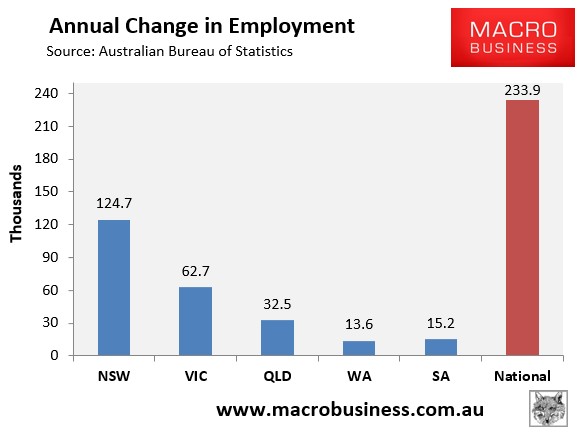
And South Australia and Queensland have the highest seasonally adjusted unemployment, whereas New South Wales (Sydney) is again leading the nation (see next chart).
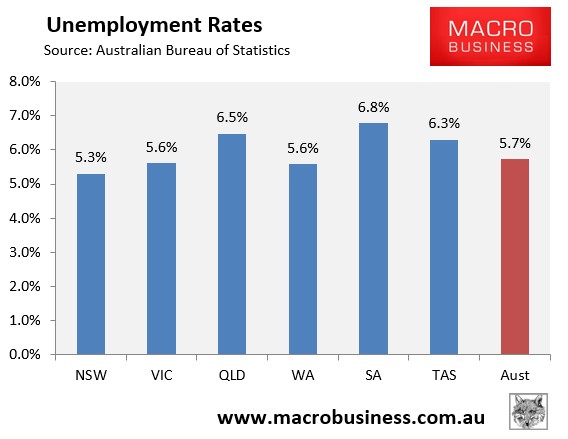
The state seasonally-adjusted figures are notoriously volatile and subject to a big margin of error. As such, the below chart shows the ABS’ trend unemployment rates, which again shows the bubble epicentre of New South Wales with by far the lowest unemployment, South Australia and Tasmania with the highest, Western Australia with below average unemployment, Victoria with average unemployment, and Queensland with above-average unemployment:
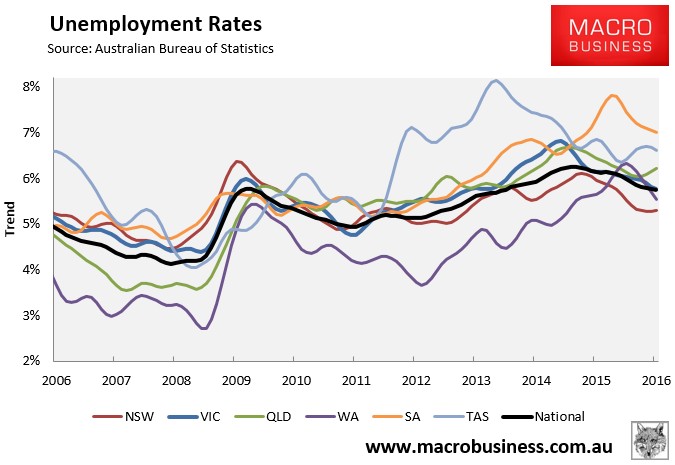
The aggregate number of hours worked continues to fall heavily in seasonally adjusted terms, down 17.9 million hours or 1.09% in April. Moreover, hours worked have fallen by 0.5% over the past year, which is a worrying sign:
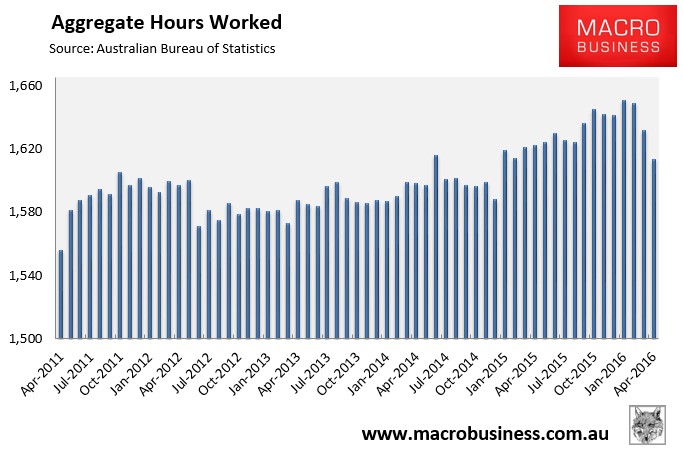
The below chart, which tracks the changes in hours worked on a trend basis, again shows that New South Wales (Sydney) has driven the lion’s share of growth in hours worked, with all of the other jurisdictions in the red. Moreover, the trends are worsening everywhere except Western Australia:
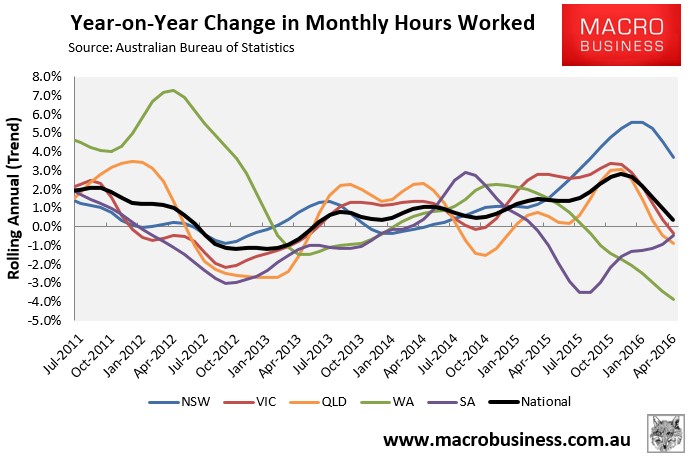
Average hours worked has also hit a record low:
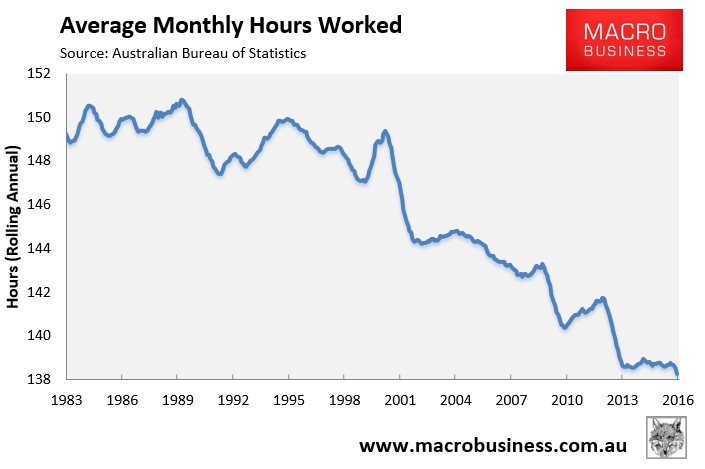
After rebounding, workforce participation has also begun to trend down:
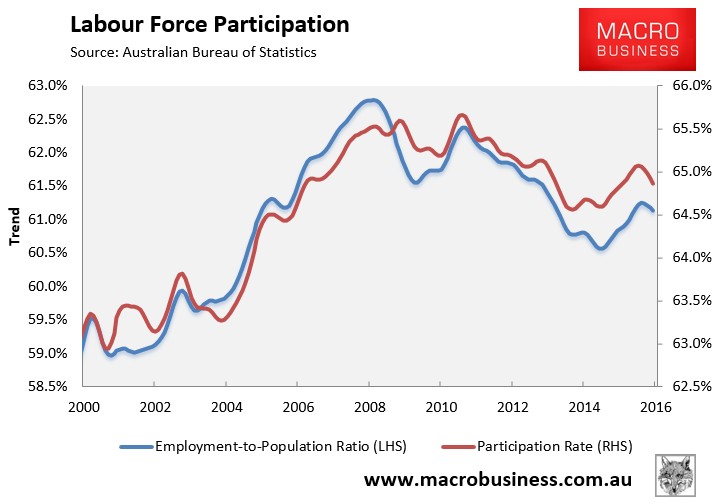
Finally, to round things out, the next chart summarises the annual change in the key employment aggregates on a seasonally-adjusted basis, which shows the solid improvement over the year in some areas by weakness in others:
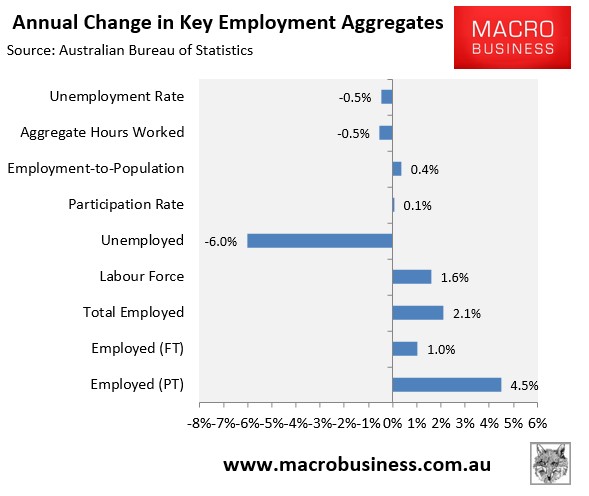
Nothing has changed to the outlook following this release.
Despite the reasonable headline results there is weakness under the hood, with the lion’s share of jobs growth part-time, growth in aggregate hours worked now negative, labor force participation now falling, and 80% of the employment growth in the two bubble epicentres of New South Wales and Victoria.
We still expect the housing-induced boom in employment to reverse later this year as dwelling construction and prices begin to fall, coinciding with the ongoing contraction of mining investment and the closure of the car industry.

